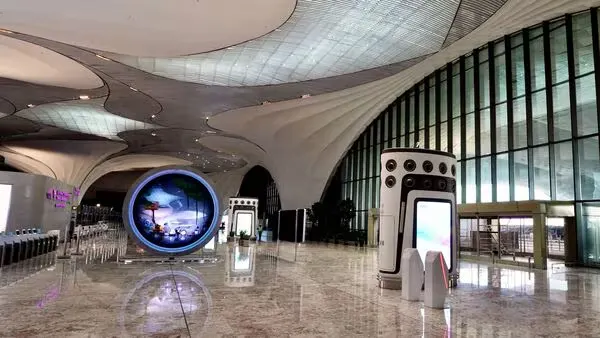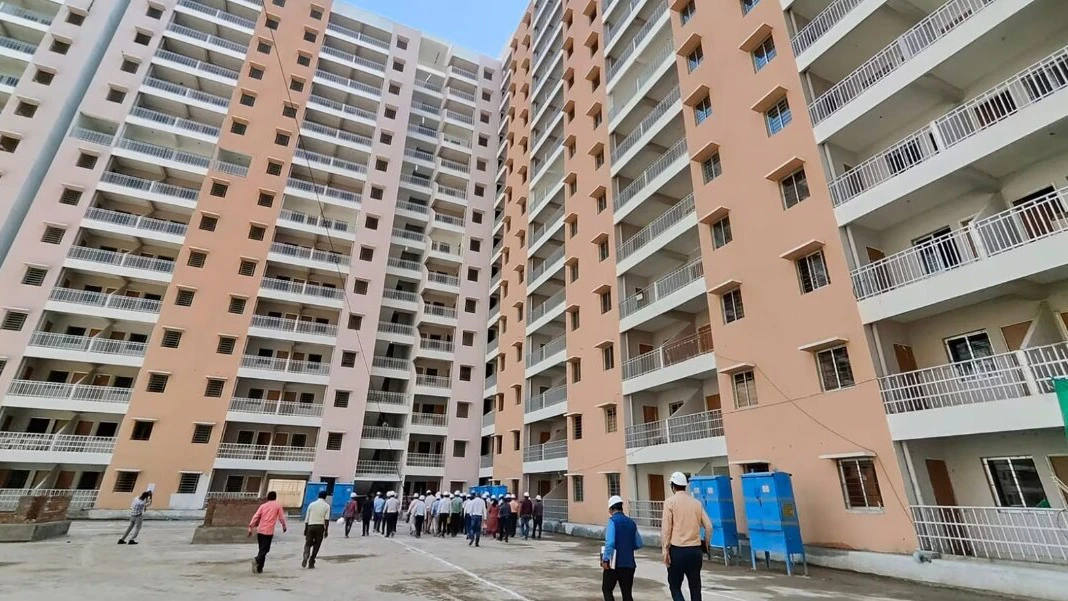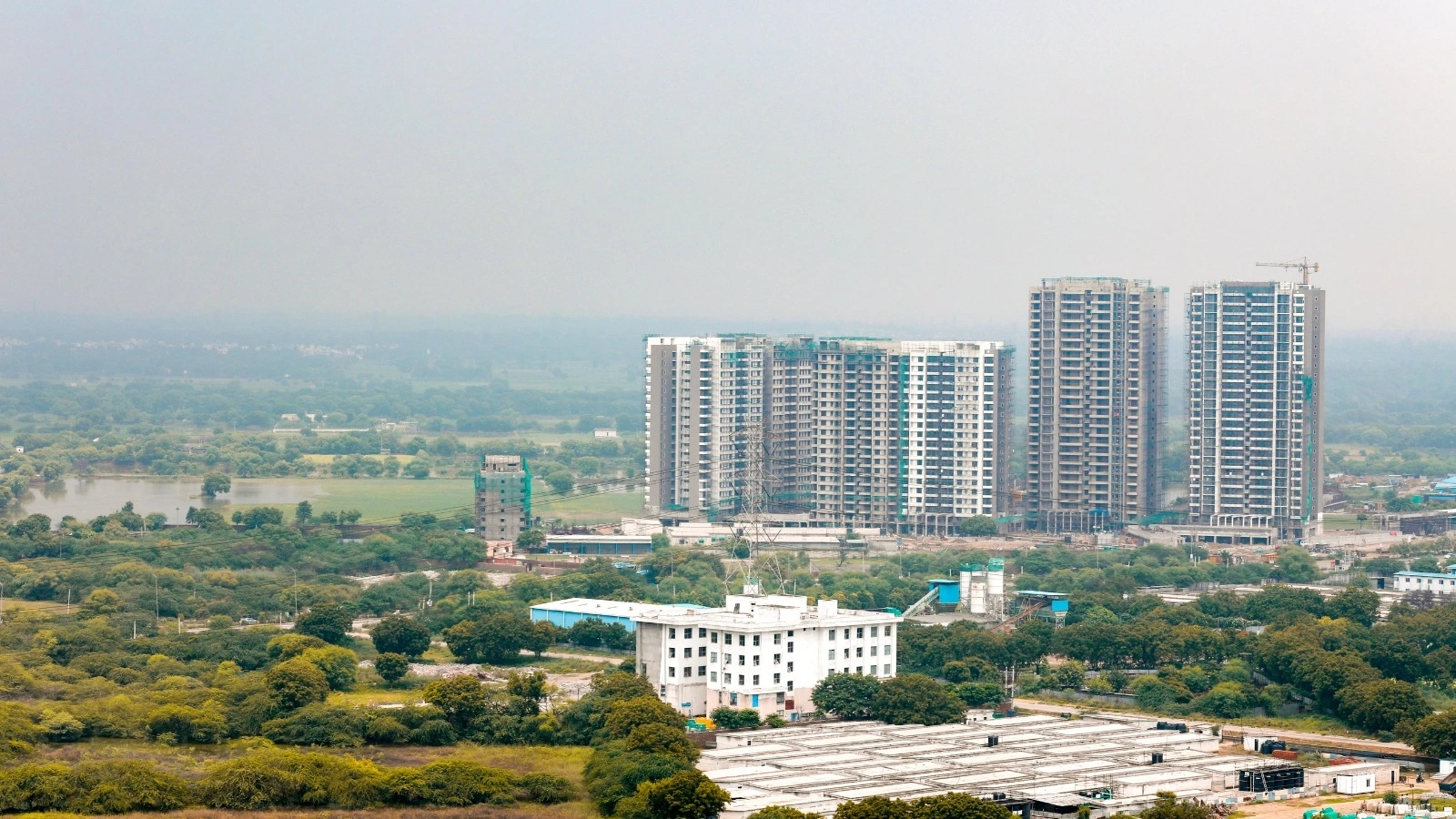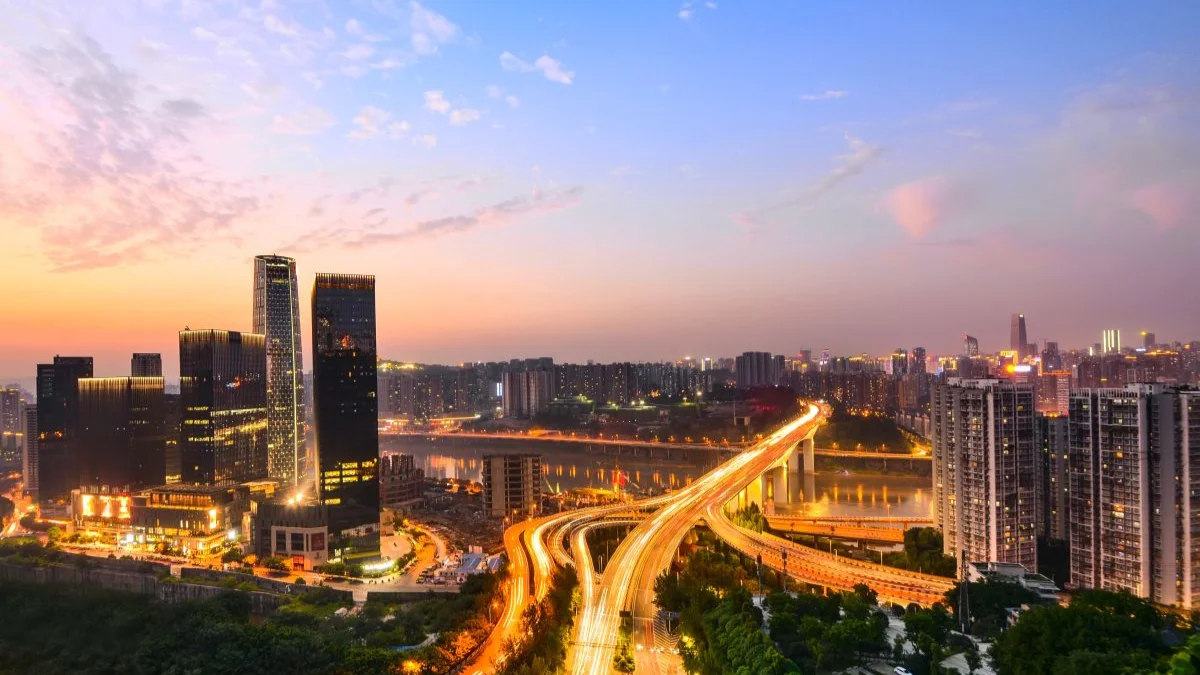Table of Content
Prime Minister Narendra Modi is set to inaugurate the Navi Mumbai Airport today, marking a transformative moment for the city’s infrastructure and regional connectivity. The inauguration is expected to accelerate development in the surrounding areas, particularly CIDCO’s ambitious 667-acre Aerocity project. This integrated urban development aims to complement the airport and position Navi Mumbai as a strategic aviation and commercial hub. Here are the five key things to know about the project and its broader significance.
About CIDCO
The City and Industrial Development Corporation (CIDCO) is the special planning authority tasked with developing Navi Mumbai as a satellite township to Mumbai. Established in the 1970s, CIDCO has been pivotal in shaping Navi Mumbai’s urban landscape, developing 14 nodes that combine residential, commercial, and retail spaces.
CIDCO’s mandate extends beyond real estate; it manages urban infrastructure and implements large-scale projects such as the Navi Mumbai Airport and the Aerocity. The agency ensures planned growth, sustainable development, and balanced land-use planning across the city.
Also Read: India’s Top 8 Housing Markets Report 87,603 Q3 Sales; NCR Prices Surge 19%
Land for Navi Mumbai Aerocity
CIDCO has acquired 667 acres of land for the Navi Mumbai Aerocity project adjacent to the airport. This strategic land acquisition ensures that urban development progresses in tandem with the airport’s operations. A consultant will soon be appointed to draft the master plan and provide transaction advisory services for the project. Having land secured upfront is crucial for integrated, large-scale development, enabling CIDCO to design a cohesive urban ecosystem around the airport.
Land Use Allocations
The 667-acre Aerocity will feature a balanced, mixed-use development plan. Approximately 123 acres each are allocated for residential, commercial, and retail purposes. This approach ensures that the city is self-sufficient, catering to the housing, business, and lifestyle needs of residents and workers alike. The land-use strategy aligns with modern Aerocity principles, emphasizing sustainable urban growth, connectivity, and economic viability.
Techno-Economic Feasibility Studies
To ensure the project’s success, CIDCO will engage a consultant to conduct comprehensive techno-economic feasibility studies. These studies will assess market demand, financial viability, and infrastructure design. Coordination with regional projects such as the Mumbai Trans Harbour Link (MTHL), Metro, and suburban rail networks will be a key focus, ensuring the Aerocity is seamlessly integrated into Navi Mumbai’s broader transport ecosystem. These evaluations are critical to creating a financially and operationally sustainable development.
Mixed-Use and Aero-Centric Vision
The Navi Mumbai Aerocity is being envisioned as a multi-functional urban hub. Planned zones include financial services, corporate offices, aerowarehousing, hotels, hospitals, schools, residential areas, and entertainment facilities. To organize this large-scale development efficiently, CIDCO proposes clustering facilities into distinct zones like Educity for education and Medicity for healthcare services. The airport-centric design ensures that economic activity and urban growth are directly tied to the operational success of the Navi Mumbai Airport, maximizing both commercial and social benefits.
Aerocities in India
Navi Mumbai joins a growing list of Aerocities across India, with nine cities currently either completed or under development. These include Delhi, Hyderabad, Mohali, Durgapur, Jewar, Ayodhya, and Devanahalli, besides Navi Mumbai. Each of these Aerocities integrates airport infrastructure with commercial, residential, and retail developments to create employment hubs and stimulate regional economic growth. Navi Mumbai Aerocity adds to this national vision by providing a well-planned, airport-linked urban environment in the Mumbai Metropolitan Region.
Also Read: Maharashtra Government Approves Slum Cluster Redevelopment Scheme for Mumbai
Strategic Importance of Navi Mumbai Airport and Aerocity
The Navi Mumbai Airport is expected to significantly enhance regional connectivity, reduce congestion at Mumbai’s Chhatrapati Shivaji Maharaj International Airport, and catalyze economic development. The Aerocity surrounding the airport is poised to generate employment, attract private investment, and drive real estate development. Its impact will be felt across residential, commercial, and logistics sectors, fostering an integrated urban ecosystem that supports sustained growth in Navi Mumbai and the surrounding metropolitan area.
Future Outlook and Development Timeline
Commercial operations at the Navi Mumbai Airport are expected to commence by December 2025. In the coming years, Aerocity will unfold in phases, guided by the master plan prepared by the appointed consultant. This phased development ensures alignment with market demand, infrastructure readiness, and connectivity improvements. Investors, developers, and other stakeholders can expect numerous opportunities in residential, commercial, and mixed-use projects over the next three to five years.
Conclusion
The inauguration of the Navi Mumbai Airport by PM Modi is a milestone for urban infrastructure and regional development. CIDCO’s 667-acre Aerocity project, with its carefully planned land allocations, feasibility studies, and airport-centric vision, is set to redefine Navi Mumbai’s urban landscape. By integrating residential, commercial, and retail spaces around a world-class airport, the project promises economic growth, enhanced connectivity, and a modern, vibrant city. As Navi Mumbai positions itself as a premier aviation and business hub, the Aerocity plan is expected to play a central role in shaping its future.








_1766133697.webp)
Ans 1. Prime Minister Narendra Modi is scheduled to inaugurate the Navi Mumbai Airport today, marking a major milestone for the region.
Ans 2. The 667-acre Aerocity is a mixed-use urban development planned around the Navi Mumbai Airport, featuring residential, commercial, and retail zones, designed to create a self-sufficient city hub.
Ans 3. Approximately 123 acres each are designated for residential, commercial, and retail purposes, ensuring a balanced, integrated urban environment.
Ans 4. CIDCO will appoint a consultant to conduct techno-economic feasibility studies assessing market demand, financial viability, and infrastructure design, ensuring sustainable and integrated development.
Ans 5. The Aerocity will include financial services, corporate offices, aerowarehousing, hotels, hospitals, schools, residential areas, and entertainment zones, organized into clusters like Educity (education) and Medicity (healthcare).
Ans 6. It joins nine other Aerocities under development or completed in India, such as Delhi, Hyderabad, Mohali, and Jewar, integrating airport infrastructure with commercial, residential, and retail developments.
Ans 7. The airport will enhance regional connectivity, reduce congestion at Mumbai’s main airport, and catalyze economic growth, while Aerocity will generate jobs, attract investment, and boost real estate development.
Ans 8. Commercial operations are expected to commence by December 2025, with Aerocity development unfolding in phased plans over the next few years.
Ans 9. The City and Industrial Development Corporation (CIDCO) is the special planning authority responsible for developing Aerocity and overseeing integrated urban planning in Navi Mumbai.
Ans 10. The project offers prospects in residential, commercial, and mixed-use developments, aligned with airport operations, infrastructure readiness, and market demand.